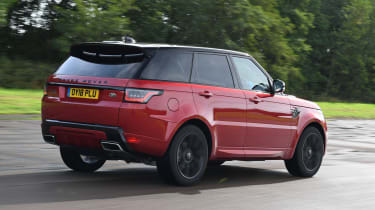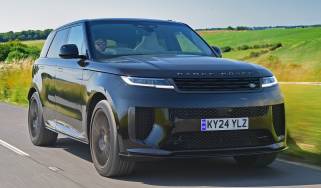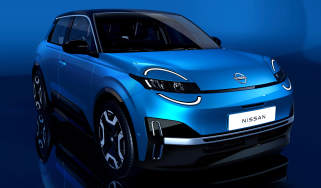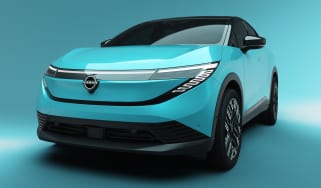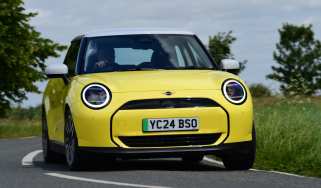Range Rover Sport SUV (2013-2022) - MPG, running costs & CO2
Fuel and tax bills will be high for all versions of the Range Rover Sport
Cars like the Range Rover Sport are rarely designed with a view to world-beating running costs; this is not an SUV that anyone will be able to run on a shoestring. It’s an expensive car to buy, too – prices rival the Audi Q8 and Porsche Cayenne Coupe. If fuel economy and low emissions are your primary concerns, the Range Rover Sport P400e plug-in-hybrid will be your best choice, but it's not cheap and offers the biggest benefits to drivers making short trips.
Range Rover Sport MPG & CO2
In theory, the P400e plug-in hybrid is by far the most fuel-efficient in the range. Its 2.0-litre petrol engine is combined with a battery and electric motor, and promises up to 84.9mpg if you take full advantage of its 25-mile claimed electric range. CO2 emissions starting from 75g/km mean a low Benefit-in-Kind (BiK) company-car tax rating, too, which will give this pricey PHEV appeal among business users. It's available across most trim levels – but with prices starting at £75,000, it’s more expensive to buy than the diesels. Buyers should also be aware that the P400e is no longer exempt from the London Congestion Charge either. This change came into effect in late 2021, when the exemption for all PHEVs was removed.
The 3.0-litre D250 diesel manages up to 34.1mpg, emits 218g/km of CO2 and occupies the highest BiK bracket. There are also more powerful D300 and D350 versions of the same engine, returning 33.1mpg and 29.8mpg, and emitting 224g/km and 249g/km of CO2 respectively. These also sit in the highest BiK bracket and are only available in the higher trim levels, costing from over £86,000..
More reviews
Car trim reviews
In-depth reviews
- Range Rover Sport review – comfortable and good to drive
- Range Rover Sport PHEV review
- Range Rover Sport PHEV SUV (2013-2022) review
- Range Rover Sport SUV review (2013-2022)
Road tests
Used car reviews
The supercharged V8 petrol engine has the highest emissions of the line-up, emitting 331g/km of CO2, again placing it in the highest bracket for both BiK. As you’d expect for such a powerful engine, regular fuel stops will be required with an official fuel economy figure of just 19.3mpg.
The P400 combines a turbocharged 3.0-litre straight-six petrol engine and a mild-hybrid assistance system. It uses an electric generator and a small 48-volt battery to harvest some of the energy created when braking. This power is then used to assist the engine when accelerating, improving its overall efficiency. Claimed fuel economy figures are 27.2mpg and CO2 emissions come in at 236g/km.
Annual road tax for all regular petrol and diesel versions of the Range Rover Sport will cost the standard VED rate from the second year onwards. Hybrid and mild-hybrid versions cost slightly less, qualifying for the lower discounted rate. And because the Range Rover Sport costs over £40,000, it's liable for the additional annual surcharge for five years, again starting from the second year.
Insurance group
The Range Rover Sport certainly isn’t cheap to insure, with the SVR version sitting in the highest possible insurance group (50). The 3.0-litre diesel HSE model starts in group 43. Suffice to say, no version will be cheap.
Warranty
The Range Rover Sport comes with a three-year/unlimited-mileage warranty, which is similar to that offered by the majority of rivals. Some, such as Audi and Volkswagen with the Q7 and Touareg, have a 60,000-mile limit.
Servicing
Land Rover recommends servicing the Range Rover Sport every year or 16,000 miles – whichever comes first. It also offers to cover the cost of services for five years for a one-off payment.

